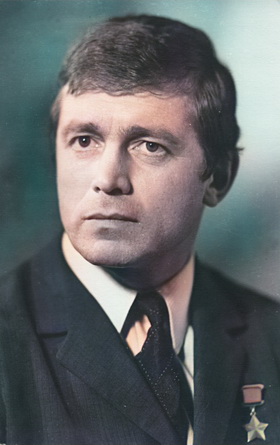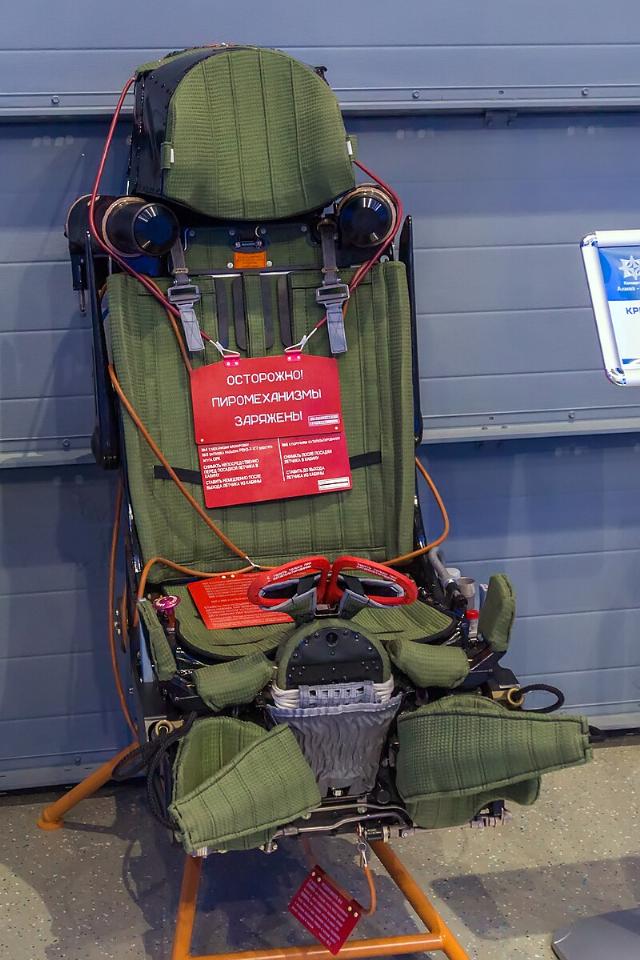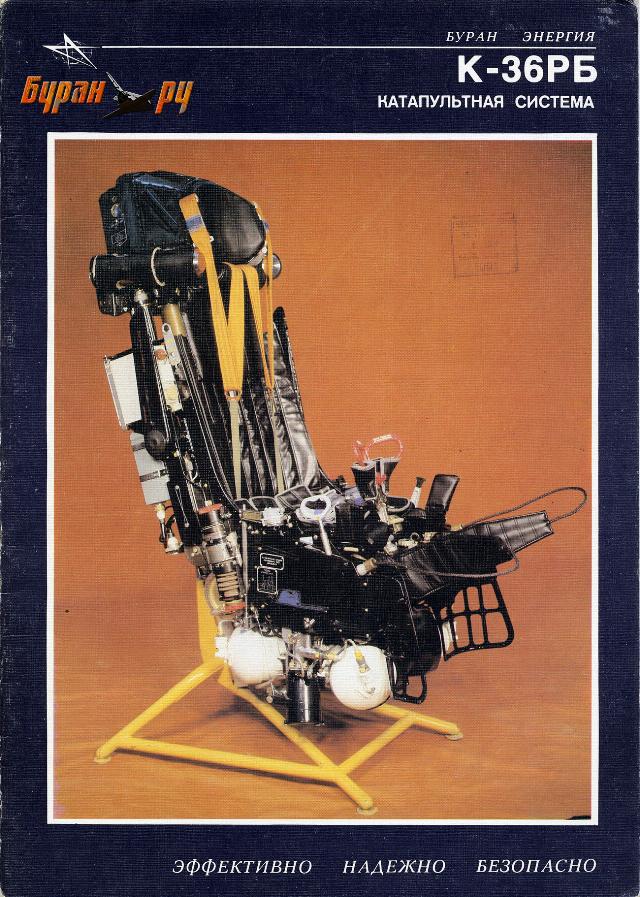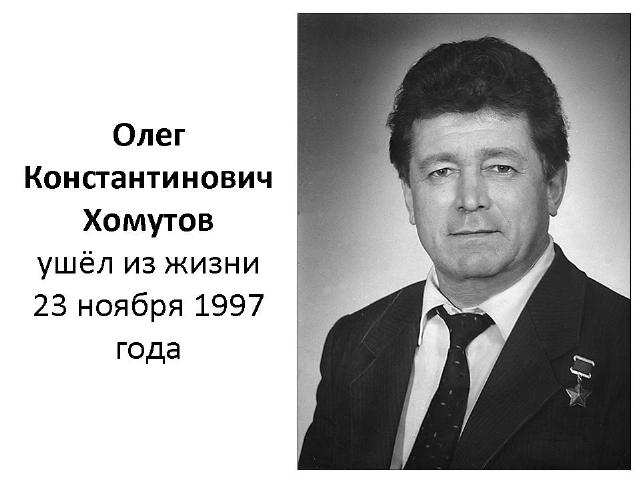On October 23, 2024, a regular meeting of the Runway Aviation Lovers Club took place in the Pink Living Room of the Zhukovsky Palace of Culture. It was timed to coincide with the 90th anniversary of the birth of Hero of the Soviet Union, test parachutist Oleg Konstantinovich Khomutov (1934-1997). It was he who tested the famous K-36 ejection seat, which saved (and is saving today) the lives of hundreds of military pilots.
 |
| Oleg Khomutov |
| Source: Valery Ageev |
At the meeting, it was told how tests of new ejection systems began and were conducted at the M.M. Gromov Flight Research Institute (LII), and their first testers, Yuri Garnaev, Vasily Kochetkov and Valery Golovin, were remembered.
Unique footage of test ejections was shown. The Hero of the Russian Federation Alexander Garnaev took part in the meeting. Aviation historian Andrey Simonov led the meeting.
A little introduction
Until the middle of World War II, to leave a damaged aircraft, the pilot got up from the seat, stepped over the side of the cockpit, stood on the wing and jumped into the gap between it and the tail. This method provided a completely reliable rescue at speeds up to 400-500 km/h. However, by the end of the war, aircraft speeds had increased significantly, and many pilots simply did not have the physical strength to withstand the incoming air flow.
In 1943, studies were conducted in the United States that showed that 12.5% of aircraft departures end in the death of pilots, and in 45.5% of cases the pilot is injured. In repeated studies in 1944, these values increased to 15% and 47%, respectively. Fatalities were often caused by a human collision with the tail and other parts of the aircraft. There is an obvious need for a new way of leaving the aircraft, in particular, the forced ejection of the pilot's seat from the cockpit.
The inventor of the ejection seat prototype is Anastas Dragomir, a Romanian designer in the field of aviation, for which Dragomir received a patent jointly with Tanase Dobrescu. Their work represented an early version of modern ejection seats.
 |
| Source: Valery Ageev |
The first catapults appeared in 1939 in Germany. The experimental Heinkel He-176 rocket-powered aircraft was equipped with a drop-down nose section. Soon the catapults became mass-produced: they were installed on the turbojet Heinkel He 280 and the piston Heinkel He-219.
On January 13, 1942, Helmut Schenck, a test pilot, performed the first successful ejection in history on a He-280. Ejection seats were also installed on some other German aircraft; in total, during the Second World War, German pilots made about 60 ejections
And at this time in the Soviet Union…
In the USSR, as well as in other countries, the first samples of such chairs were created. On July 24, 1947, a Pe-2 bomber took off from one of the airfields near Moscow. The famous test parachutist G. F. Kondrashov is located in the shooter's cabin, which has been converted into an ejection seat. When the plane entered the set mode, a chair with a parachutist flew out of the cockpit. Separating from the chair, which rushed down in free fall, the tester opened the parachute. The entire cycle was performed manually and filmed from an airplane flying nearby.
 |
| Source: Valery Ageev |
In the 52nd year, plant No. 918 was established in Tomilino, in the Moscow region, which later received the name Scientific and Production Enterprise (NPP) Zvezda, whose main task was life support and rescue of pilots.
At that time, the plant (its first head was Alekseyev Semyon Mikhailovich) worked closely with the Liiev Laboratory No. 24, which was headed by Guy Ilyich Severin, because the topics were similar. And in '64, when Pyotr Dementiev was the Minister of Aviation Industry, he invited Guy Ilyich to the factory and at the age of 38 he was appointed chief designer of Zvezda. And he directed Zvezda until his death in 2008.
 |
| Source: Valery Ageev |
Guy Ilyich's main and favorite brainchild was his K-36 ejection seat, which has saved more than a thousand pilots' lives over the years. Severin conceived it when he was still the head of the laboratory at LII.
Many people probably remember the 1989 footage from Le Bourget. Then the Soviet MiG-29 suddenly began to fall during the aerobatics show. The pilot Anatoly Kvochur ejected at a negligibly low altitude, only about 80 meters, and even at an angle of 90 degrees to the ground. However, he remained alive.
There were many more incidents when the catapult helped out. It was for her trials in the 70s of the last century that Oleg Khomutov, a native of the Kama region, received the title Hero of the Soviet Union.
World Champion
The future tester was born on October 25, 1934 in Usolye (now Perm Krai). Oleg's parents worked at the Berezniki chemical plant. Oleg did not live in Usolye for very long. His parents divorced and he and his mother moved to the Leningrad region. And then the war began, they were evacuated to Bashkiria.
On the way there, the train was bombed, hundreds of people were killed and injured, only a few dozen refugees remained unharmed, and among them seven—year-old Oleg and his mother. They managed to return to the Leningrad region, to the mining town of Slantsy, only in 1948.
As a child, Oleg was attracted by the sea. His maternal grandfather was a sailor and died heroically in the famous Battle of Tsushima. At home, my grandfather's photo hung in the most prominent place. And most likely, it was this photo that instilled in the grandson's soul the desire to become a sailor. Sea fortune smiled at Oleg, but not for long. He entered the Jung school, fell ill and had to leave it.
Here, after an unsuccessful attempt to become a cabin boy, Oleg became interested in aircraft models, created a circle at school and led it himself. His first model with a rubber motor at the regional competitions lasted 1 minute and 45 seconds in the air. Oleg was awarded a certificate of honor. At night, he began to dream about real airplanes. After the tenth grade, the young man entered the aircraft engineering faculty of the Moscow Aviation Institute, and successfully graduated from it.
 |
| Source: Valery Ageev |
I started skydiving here. While still a student, he became a master of sports, and at the age of 27 he set two group parachute records and became a world champion. A group acrobatic jump of parachutists holding hands was performed for the first time by A. Skozhinov, O. Khomutov and E. Drozdov.
When Oleg was asked if he had ever been scared, he replied:
- It's always scary. I've been jumping for twenty years now, but it's scary now. Man is not a robot. He knows what he's doing. There is no need to be afraid of fear. It must be overcome!
In 1960-1962 and in 1967-1975, he was a test parachutist at the Scientific Research Institute of Automatic Devices (now JSC Scientific Research Institute of Parachuting Engineering is the only head developer of parachute systems of all types in Russia and one of the few enterprises in the world that independently carries out a full cycle of creating parachute systems).
In 1962-1967 he worked as a test parachutist at the Flight Research Institute (LII). I tested parachutes and ejection seats. He performed about 100 jumps and 8 ejections from Be-12, Il-28, MiG-15LL, Su-9LL, Tu-22, Yak-25LL aircraft.
He worked with famous test pilots, real aces of their field: Yuri Garnaev, Oleg Gudkov, Arkady Bogorodsky, Valentin Vasin, Eduard Yelyan.
 |
| Source: Valery Ageev |
After each experiment, the tester was obliged to describe in great detail the behavior of the chair, his own behavior and attitude, and then, without hiding his mistakes and blunders, tell the commission, scientists, and designers about everything. According to his words and conclusions, they give a start in life to new types of means of salvation.
- To confess everything honestly is the main courage of the tester!, thought Khomutov.
During his work at the LII under the leadership of G. I. Severin, he participated in the research and testing of all-weather ejection seats at flying laboratories (LL). The elements of the seats (a combined firing mechanism, a three-stage parachute system) were tested and tested on the LL and recommendations were developed by the aircraft Design Bureau on the choice of effective technical solutions for all-terrain seats. In addition to Khomutov, test parachutists E. N. Andreev and V. I. Danilovich also took an active part in these works.
 |
| Source: Valery Ageev |
The K-36 Epic
Guy Ilyich's main and favorite brainchild was his K-36 ejection seat, which has saved more than a thousand pilots' lives over the years. Severin conceived it when he was still the head of the laboratory at LII.
When all the ground flight tests with the dummy were completed, there were flight tests with pilot V.I. Danilovich in Feodosia. Everything went well, he ejected, and conducted radio conversations. But the wind blew him onto the water and he splashed down. And while the sailors were starting the boat, the tester drowned and drowned.
The military said Danilovich drowned because the chair was improperly designed. At that time, there was not enough good equipment to assess the condition of the tester. He was examined after the disaster: his spine was broken. And the verdict was passed: the chair killed him, and that's it. And Guy Severin saw from the helicopter that he landed alive and well. But the military put an end to this chair.
However, Guy Ilyich, after this tragedy, achieved the exhumation of Danilovich's corpse, which was difficult for everyone. They conducted a re-examination, and found out that he had these injuries many years before the ejection. He hid them so that they wouldn't be expelled from probation work. Repeated tests were scheduled. Oleg Khomutov tested the chair. Everything went off without a hitch.
And Guy Ilyich began to "poke around" in different design bureaus to put this chair on combat vehicles. Pavel Osipovich Sukhoi was the first to agree to this step.. He put two chairs on the Su-24 at once, and from this front-line fighter-bomber, the chair went everywhere.
 |
| Source: Valery Ageev |
Then there were Mikoyan and Yakovlev. Tupolev used the K-36 up to the Tu-160 strategic missile carrier (4 ejection seats). And there was even a case when they saved the entire crew.. The fifth generation of these ejection seats is already being made. The chair became thinking, automatic.
And on the last seats there is now a computer that receives information about the speed and angular position of the aircraft every hundredths of a second. And even if the pilot ejects from the aircraft, upside down, the automation decides to turn on the side-turn engines. That is, the chair is displayed upwards.
So this K-36-3.5 chair (generation three and a half) is put on the Su-35 and the last MiGs. And now there are chairs of the 4th and 5th generations. That is, over these 30-plus years, the chair has undergone a lot of improvements and is still recognized as the best chair in the world. Now it is installed on almost all military aircraft of our country and a number of foreign countries.
Then, on the basis of the K-36, the K-36RB chair was made for the Buran, which worked properly from zero altitude to 30 km. If such a system had been on the Challenger, its crew would have been saved.
 |
| Source: Valery Ageev |
In the order for the company where Oleg Khomutov worked, it was written:
- On October 31, 1970, senior engineer, test parachutist O. K. Khomutov performed an ejection with a prototype product. The ejection was performed under difficult conditions that required extreme tension, courage and high skill from the tester. In the peaceful year 1971, Oleg Konstantinovich Khomutov was awarded the title Hero of the Soviet Union. It was the reward of the Motherland for completing a particularly important task, and for thirty years of heroic work as a test pilot.
What a guy he was!
As the famous Perm writer and journalist Vladimir Mikhailyuk wrote, Oleg did not recognize rest homes and resorts, believing that recreation should be active. One day, he and his friends made a raft called "Reliable", made a trip to Pechora on it, then with his wife, one and a half year old daughter and three-year-old son they went to the sea, where they lived in a tent. Oleg, a passionate lover of spearfishing, foraged for food in underwater meadows.
He could tell us about impressions unknown to us not only in the bottomless reservoir of the sky, but also in the depths of the sea, where sound travels five times faster in a dense environment of water than in the sky.
An interesting thing was his passion for collecting proverbs, sayings and aphorisms somewhat peppered with sarcasm, reshaped and, perhaps, reinterpreted or invented by him. Here are some of them:
- You can see the bird by its droppings. It's hard to treat, easy in a coffin. If you want to help, don't interfere. How much does it take to be possible?
In 1976-1997. Oleg worked as a design engineer for the Scientific and Production Association Zvezda. At the same time, he began writing a book about his work. Unfortunately, the work on it was delayed, it was never finished. Here are some chapters from it, where Khomutov writes about his feelings during ejection:
- I pull the handles sharply. And ... I sit in place (so it seems to me). Won't I shoot myself? I'll have to sit down, and then this hassle again!... In a moment of intense nervous tension, time is perceived not at all like around a campfire on a fishing trip. A minute that has passed unnoticed at home, like rubber, stretches into "eternity" during trials. The moment of ejection, which for the entire maintenance team on the ground is perceived as a shot, is a moment that lasts longer for the tester. Perception, the feeling of time is completely different than in everyday life.
Smoothly squeezed, hit, pressed, released! Do you fall down with the chair and wait for the devices invented by someone to free you?.. Let's wait. It's still a long way to land! The time drags on for an agonizingly long time... I'm waiting for the signal flag on the right knee of my leg (I invented it myself for personal reassurance). It's a long wait. You stop believing yourself. The twitching begins: Should I save myself or wait?... I'm waiting with fear... Well, well, well, well... Clap! Appeared! So, in five seconds, the chair will work. Let's wait... Well, hurry up!
Shaken up! He looked up. Opened up! There is a white and orange parachute dome above me! I want to live! Birds are flying below. I'm above them! The joy of liberation, the joy of life! I'm alive! I'm back! He plopped down on the same steppe, sprawled blissfully on the burnt grass. You feel the smells of the steppe especially acutely... Birds chirp unusually... It seems that you can hear the butterflies flapping their wings.
Conclusion of the Commission: the chair and equipment are suitable for use. All past experiences fade into the background. The joy of victory over oneself, the joy of perfect work. And many days of elated mood. It's unique. And there is another job ahead, which again requires strength, knowledge, and patience from you...
 |
| Source: Valery Ageev |
Oleg Khomutov died in 1997, at the age of 63. He is buried in Moscow, at the Nikolo-Arkhangelsk cemetery. There is a memorial plaque on the house where he lived. And the parachute systems and catapults that Khomutov tested are still used by pilots all over the world. And they still reliably save pilots' lives.
 |
| Source: Valery Ageev |
Valery Ageev
